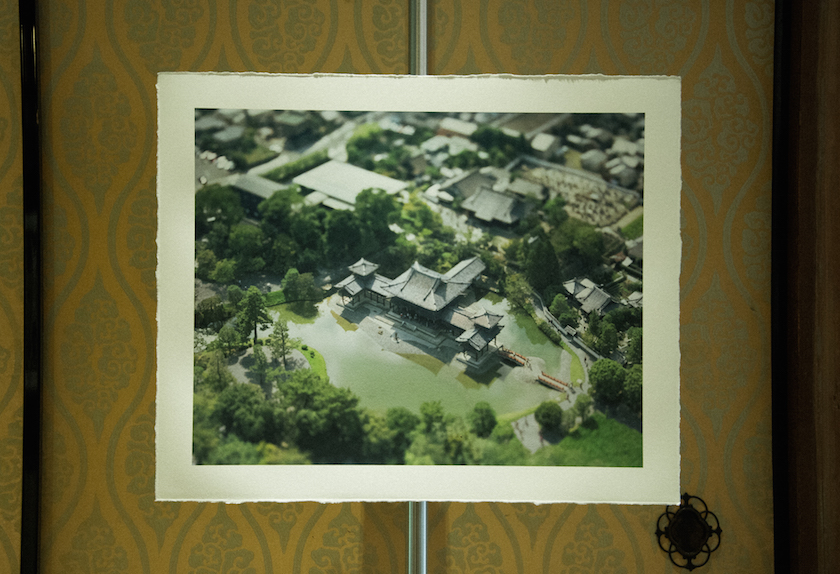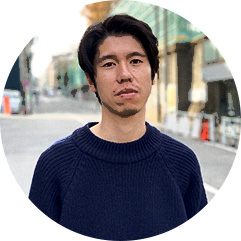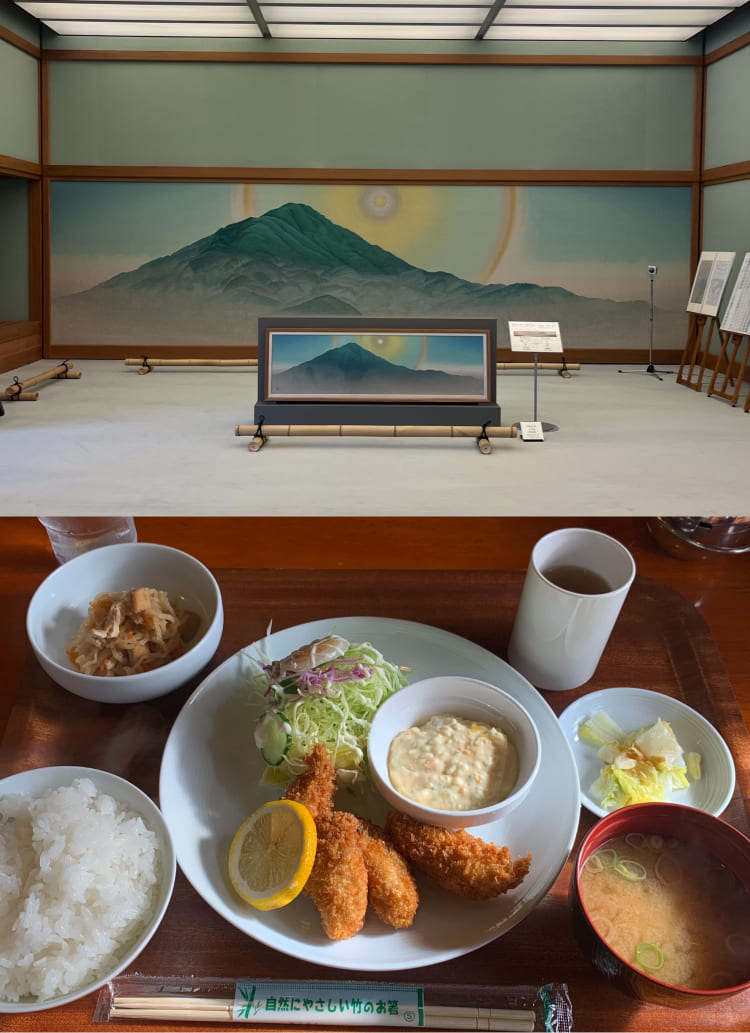
Byodoin" (2007) W610×H498mm, Edition 1/1 on Washi Paper
The shirt I'm wearing today is also by Paul Smith. When I want to do things properly, I reach for this brand. Like the embroidery on the chest, it has a playful feel to it, even though it's neat and proper. It is similar to my style.
In late April, the editorial staff of "Huinamu" went to Kyoto to interview Mr. Honjo, who was present at the "KYOTO in KYOTO" exhibition. We visited "Paul Smith Sanjo", a store that was renovated from a house built in the early Showa period. Mr. Honjo, who welcomed us in a secluded room with his works on the wall, gave off a fairy-like air as if he had stepped out of his own works.


Honjo Naoki (third highest of the eight hereditary titles)
Born in Tokyo in 1978. Graduated from Tokyo Polytechnic University, Faculty of Fine Arts, Department of Photography, and completed the Graduate School of Fine Arts, Department of Media Art, Photography. In 2006, he won the Ihei Kimura Photography Award for his debut work "Small Planet. He spends his days traveling around the world with a large format camera.
This is the third time I have held a solo exhibition at Paul Smith, following exhibitions in London and Tokyo. It all started when Paul liked my work, and when I proposed to him that I would like to shoot in London for the first time, he said yes. He even helped me with the location scouting. He was, in a word, delightful and warm. I was also impressed by the cordial hospitality of his staff.
For those who do not know, Mr. Honjo is a photographer who won the Kimura Ihei Award for "small planet," a bird's-eye view of the Tokyo cityscape using the "agitation" photographic technique. It is hard to believe that he is using an actual city as his subject, and his photographs, which could easily be mistaken for dioramas, are somewhat humorous. The photographs are somewhat humorous, giving the viewer the illusion of having wandered into a wonderland.


This exhibition, set in Kyoto, is the result of seven aerial photography sessions, and features works from "Kyoto/Kyoto: Naoki Honjo's Photography Collection" released in 2016, as well as the Kyoto Imperial Palace and Byodoin Temple, which have never been exhibited before. I photographed the city's landmarks along with its mountains and rivers in each of the four seasons."
For Mr. Honjo, Kyoto is a city with which he has a connection. My father's side of the family was in Kyoto.
When I was a college student, I came to visit whenever I could get a break. My friends and I would take the car out. I didn't have any money, so I stayed in the wild. At that time, I didn't understand the beauty of shrines and temples. Still, I enjoyed just walking around.
The work was burned on Japanese paper.
The old city is the main attraction of the exhibition. The use of Japanese paper called "bamboo Washi," while maintaining the colors, created the perfect atmosphere for the city and my style.

The Temple of the Golden Pavilion (2007) W610×H498mm, Edition 1/1 on Washi Paper

Heian Jingu Shrine Otorii (2007) W610×H498mm, Edition 1/1 on Washi Paper

Kiyomizu-Dera Temple" (2007) W610×H498mm, Edition 1/1 on Washi Paper

The Kyoto Imperial Palace" (2007) W610×H498mm, Edition 1/1 on Washi Paper
I get the impression that the fantasy touch is further enhanced by the use of Japanese paper, but how did Honjo's style develop in the first place?
I was a junior high school student who had lost my mother, and that night I rode my bicycle with nowhere to go. I was struck by a strange sensation. The buildings surrounding me seemed to be looming over me. It didn't seem real. I wanted to express this in my photographs, which led me to my current style. There may have been a cold eye, as if I were critiquing civilization. On the other hand, I was simply overwhelmed by the unfathomable power of human activity. Well, there are times when I feel that Tokyo should indeed return to nature (laughs). (Laughs.) The city is endless.
Kyoto seemed to fit well in this respect.
I have always photographed highly man-made cities, but I was also interested in old cities, and that is why I chose Kyoto. I chose Kyoto because I was interested in old cities. It is surrounded by nature, and everything is within easy reach.
The Daimonji Yaki and Mt. Hiei left a particularly strong impression on me. Daimonjiyaki is a natural, but even when viewed from a helicopter, it is marked with the word "dai" (large). Hieizan is really located in the middle of the mountain. I liked the feeling of its secluded location."

Kyoto Gozan Okuribi Daimonji (2007) W610×H498mm, Edition 1/1 on Washi Paper

Hieizan" (2007) W610×H498mm, Edition 1/1 on Washi Paper
The exhibition will be open until May 13. If you are planning to visit Kyoto, please make sure to extend your visit. The work will stimulate your brain and leave you feeling relaxed at the end. The good-tempered ladies of "Kyogoku Stand," a long-established bar not far from the Sanjo branch, will also be waiting for you as you pass through the curtain.
Photo_Makiko Takemura
Text_Kei Takegawa
Edit_Ryo Muramatsu
"KYOTO in KYOTO" by Naoki Honjo
Dates: ~May 13 (Sun.)
Location: Paul Smith Sanjo Store
Address: 28 Nakano-cho, Sanjo-dori, Tominokoji Higashi-iru, Nakagyo-ku, Kyoto-shi, Kyoto
Open: 11:00 - 20:00, open year-round
Phone: 075-212-2313
www.paulsmith.co.jp








